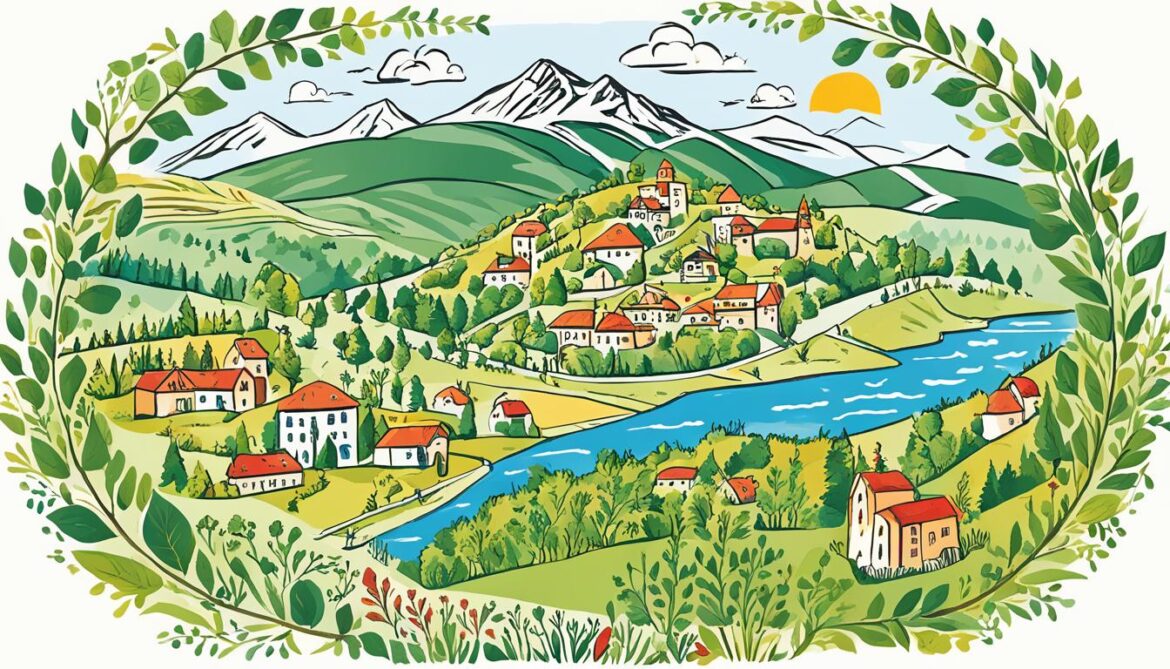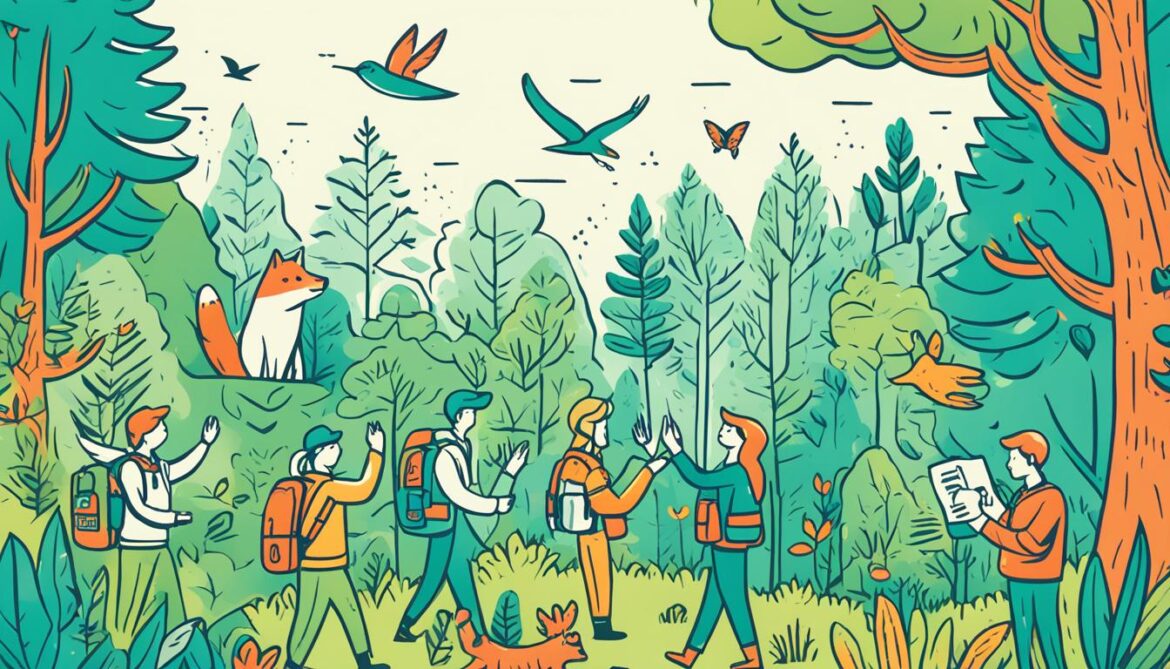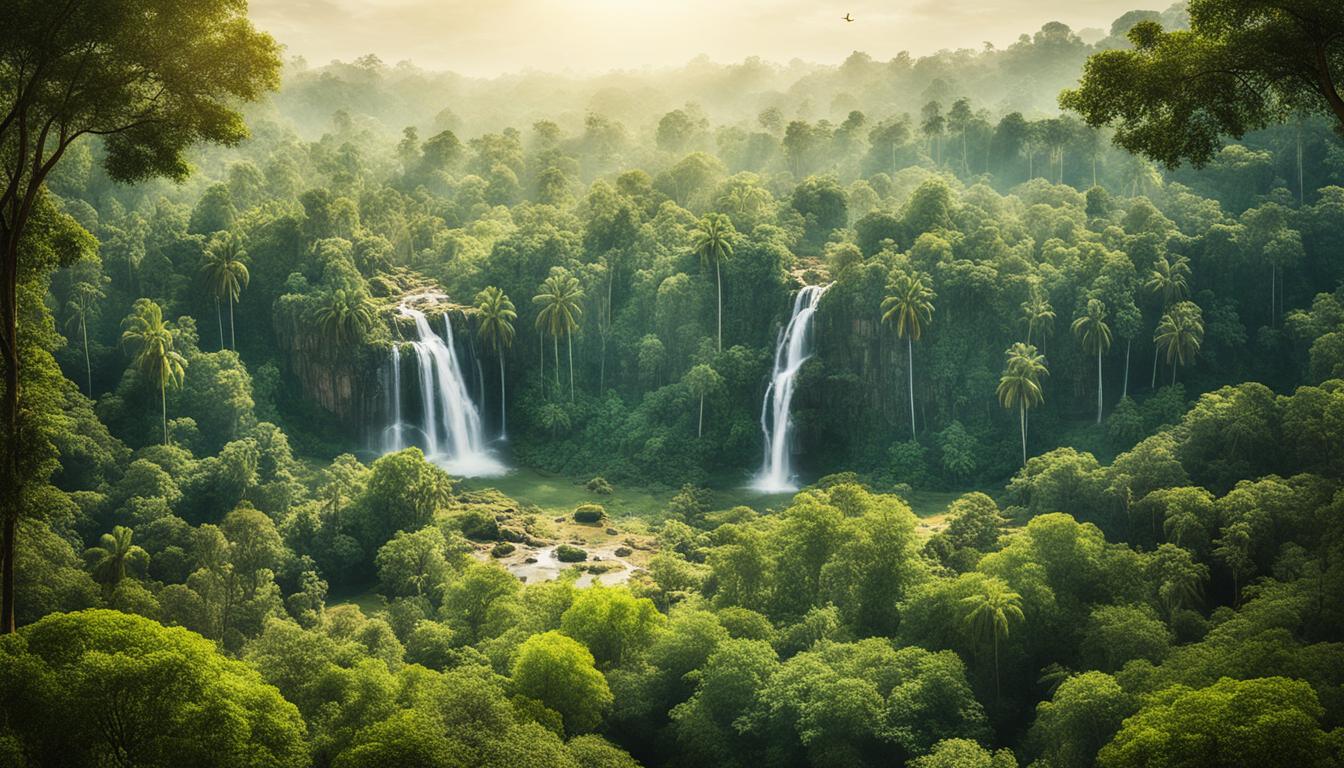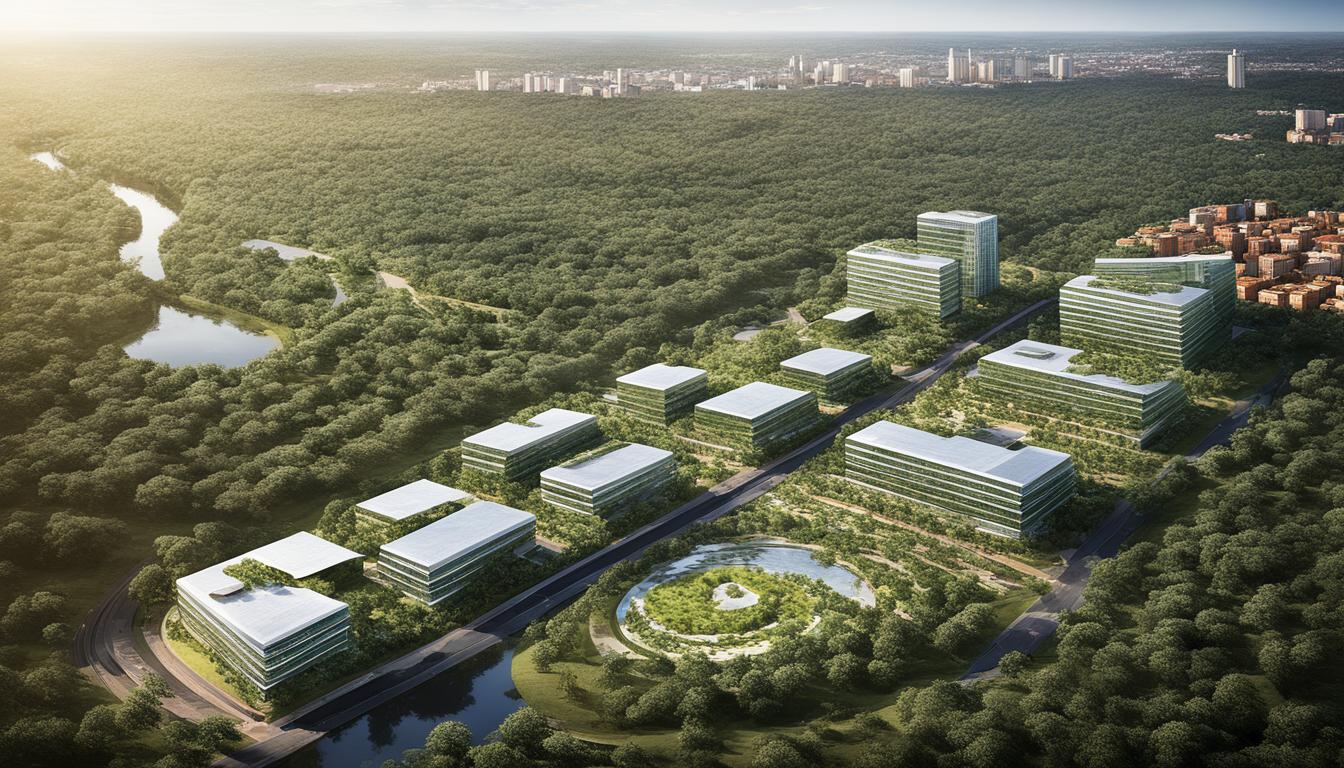Kosovo Sacred Natural Sites and Biodiversity
Did you know that the sacred natural sites in Kosovo are home to over 255 endemic species?
Kosovo’s rich natural heritage and biodiversity are closely intertwined with its sacred natural sites. From medieval monuments to national parks, these sites not only reflect the diverse cultural and biological landscapes of the region but also play a crucial role in conservation and environmental preservation. They are considered cultural landscapes, holding traditional ecological knowledge passed down through generations. Effective conservation management is essential to protect these sites and promote sustainable development in Kosovo.
Key Takeaways
- Kosovo’s sacred natural sites are home to over 255 endemic species.
- These sites reflect the country’s cultural and biological diversity.
- Conservation management is crucial for protecting and preserving these sites.
- Traditional ecological knowledge plays a significant role in conservation efforts.
- Effective conservation promotes sustainable development in Kosovo.
Medieval Monuments in Kosovo
The medieval monuments in Kosovo are an exquisite display of Byzantine-Romanesque ecclesiastical culture. These architectural marvels include the Dečani Monastery, the Patriarchate of Peć Monastery, the Church of Holy Apostles, and the Church of the Holy Virgin of Ljevisa. Each monument boasts unique styles of wall paintings that capture the essence of their historical significance.
The Dečani Monastery, renowned for its grandeur, showcases exceptional Byzantine influences in its intricate frescoes. The Patriarchate of Peć Monastery stands as a testament to the fusion of Byzantine and Romanesque architecture, with its stunning wall paintings depicting biblical scenes.
The Church of Holy Apostles captivates visitors with its captivating Byzantine-style frescoes that depict scenes from the Bible and the lives of saints. Additionally, the Church of the Holy Virgin of Ljevisa showcases remarkable Romanesque elements, from its architectural design to its captivating wall paintings.
[Medieval Monuments] in Kosovo are not only exceptional cultural landmarks but also bustling hubs of historical and artistic significance. The frescoes within these monuments represent different periods and styles of art, illustrating the influences of both Eastern Orthodox Byzantine and Western Romanesque traditions.
“The medieval monuments in Kosovo serve as a window into the rich history and cultural heritage of the region. They provide invaluable insights into the artistic achievements of the Byzantine-Romanesque era.” – [Name of Expert]
These medieval monuments are a testament to the impressive craftsmanship and artistic vision of their creators. They stand as invaluable heritage sites that showcase the artistry and cultural richness of Byzantine-Romanesque culture in Kosovo.
The Dečani Monastery
The Patriarchate of Peć Monastery
The Church of Holy Apostles
The Church of the Holy Virgin of Ljevisa
The wall paintings and architectural splendour of these medieval monuments continue to captivate visitors from around the world, offering a glimpse into the vibrant history and cultural heritage of Kosovo.
| Medieval Monuments | Style | Notable Features |
|---|---|---|
| Dečani Monastery | Byzantine | Frescoes depicting biblical scenes |
| Patriarchate of Peć Monastery | Byzantine-Romanesque | Architectural fusion, awe-inspiring wall paintings |
| Church of Holy Apostles | Byzantine | Fascinating frescoes, biblical and saintly depictions |
| Church of the Holy Virgin of Ljevisa | Romanesque | Distinctive architectural design, captivating wall paintings |
The medieval monuments in Kosovo are a testament to the rich cultural heritage and historical significance of the region, attracting visitors with their captivating wall paintings and architectural beauty. These treasures provide a peek into the Byzantine-Romanesque culture that flourished in Kosovo and hold immense value for art lovers, historians, and cultural enthusiasts alike.
Kosovo’s Bjeshkët e Nemuna National Park
Kosovo is home to the magnificent Bjeshkët e Nemuna National Park, established in 2012 to safeguard the country’s remarkable biodiversity and natural heritage. With its diverse ecosystem, this protected area is a sanctuary for over 255 endemic species, some of which cannot be found anywhere else on Earth.
Bjeshkët e Nemuna National Park plays a vital role in maintaining ecological connectivity in the region. It serves as a crucial link between different habitats, allowing species to freely move and ensuring gene flow, which is key to the long-term survival of various plant and animal species.
Despite its significance, noncompliance with regulations poses a challenge to the conservation efforts in this park. Understanding the root causes of noncompliance is imperative to the formulation of effective strategies that can address this issue.
Preserving the rich biodiversity and the ecosystem services provided by Bjeshkët e Nemuna National Park requires a collaborative approach that involves government agencies, local communities, and non-governmental organizations. By working together, sustainable solutions can be implemented to protect the park’s natural treasures for future generations.
Table: Endemic Species in Bjeshkët e Nemuna National Park
| Category | Number of Endemic Species |
|---|---|
| Flora | 153 |
| Fauna | 102 |
This table displays the number of endemic species found in Bjeshkët e Nemuna National Park, highlighting the remarkable richness of its biodiversity.

Conservation Efforts in Bjeshkët e Nemuna National Park
Efforts are underway to address the noncompliance challenges in Bjeshkët e Nemuna National Park. These efforts include:
- Improving public awareness: Raising awareness about the importance of the park and its conservation needs will help foster a sense of responsibility among visitors and local communities.
- Strengthening law enforcement: Enhancing enforcement of regulations within the park will help deter noncompliant activities and ensure the effective protection of the park’s biodiversity.
- Engaging local communities: Collaborating with local communities and involving them in park management decisions fosters a sense of ownership and encourages sustainable practices.
- Scientific research: Conducting scientific research within the park provides valuable insights into its biodiversity and ecosystem dynamics, enabling evidence-based conservation strategies.
By implementing these conservation efforts and addressing noncompliance, Bjeshkët e Nemuna National Park can continue to thrive as a haven for unique species and contribute to the ecological connectivity in the region.
Africa Protected Areas Congress and Kosovo’s Conservation Efforts
The Africa Protected Areas Congress (APAC) plays a crucial role in promoting conservation and sustainable development across Africa. By positioning protected areas within the broader goals of economic development, APAC raises awareness about the importance of conserving biodiversity and delivering essential ecosystem services. The congress serves as a platform for sharing best practices, facilitating collaboration, and collectively addressing common challenges.
In Kosovo, conservation efforts are closely tied to partnerships with Indigenous Peoples and Local Communities (IPLCs). These partnerships recognize the significant role that IPLCs play in conserving the country’s biodiversity. Through innovative models such as conservancies and sacred natural sites, IPLCs actively contribute to preserving the natural heritage and cultural landscapes of Kosovo.
Efforts like Room to Roam highlight the importance of creating mutually beneficial relationships between people and animals. By promoting coexistence and sustainable impact, Room to Roam aims to ensure that both wildlife and local communities thrive together.
Conservation in Kosovo is not solely about protecting biodiversity; it is also about supporting the well-being and livelihoods of the people who depend on these natural resources. By engaging IPLCs and focusing on holistic approaches to conservation, Kosovo is carving a path towards a more sustainable future.

Indigenous Peoples and Local Communities in Kosovo’s Conservation Efforts
| Initiative | Objective | Impact |
|---|---|---|
| Kosovo Conservancies | Empower local communities to manage and conserve biodiversity | Enhanced community involvement and ownership of conservation initiatives |
| Sacred Natural Sites | Preserve spiritual and cultural connections to the environment | Protection of sacred sites and the promotion of traditional ecological knowledge |
| Room to Roam | Promote coexistence between people and wildlife | Enhanced understanding of wildlife corridors and mitigation of human-wildlife conflict |
The partnerships between IPLCs and conservation organizations in Kosovo exemplify the value of collaboration and knowledge sharing. Together, they strive to achieve a balance between conservation, economic development, and the well-being of both people and nature.
Challenges in Conservation Compliance in Kosovo
Conservation compliance in Kosovo faces several challenges that hinder effective conservation management. One significant challenge is the perception of the government as corrupt and ineffective. This perception negatively influences people’s willingness to comply with conservation regulations, undermining conservation efforts. Furthermore, weak law enforcement and corruption within the system contribute to noncompliance and the degradation of natural resources.
Local perceptions of national parks also impact compliance. In Kosovo, there has been a transition from a communist regime to a capitalist society. This transition has resulted in changes in people’s attitudes towards natural resource management and conservation. Some individuals may view national parks and conservation efforts as restrictions on their economic opportunities.
Understanding these challenges is crucial for developing solutions and promoting effective conservation management in Kosovo.
Government Perception and Corruption
The perception of the government as corrupt undermines conservation compliance in Kosovo. Both local communities and individuals may have a lack of trust in the government’s ability to enforce conservation regulations fairly and transparently. This perception can discourage individuals from adhering to conservation regulations, leading to noncompliance and further degradation of natural resources.
Law Enforcement and Noncompliance
Weak law enforcement exacerbates noncompliance with conservation regulations. Inadequate resources, personnel, and training limit the ability of law enforcement agencies to effectively monitor and enforce compliance. This allows illegal activities, such as poaching or illegal logging, to persist and contribute to the deterioration of natural habitats and biodiversity.
Local Perceptions and Transition
The transition from communism to capitalism has impacted local perceptions of conservation and natural resource management. In a capitalist society, there may be a stronger focus on economic development, often at the expense of environmental conservation. Some individuals may perceive national parks and conservation efforts as hindrances to their economic opportunities, leading to resistance and noncompliance.
Addressing these challenges requires a multi-faceted approach. Implementing stronger anti-corruption measures, improving law enforcement capabilities, and fostering greater public awareness and engagement are essential. By developing strategies that address these challenges, Kosovo can promote effective conservation compliance and ensure the long-term preservation of its natural heritage.
| Challenge | Description |
|---|---|
| Government Perception | The perception of the government as corrupt and ineffective undermines trust and compliance with conservation regulations. |
| Corruption | Corruption within the system contributes to noncompliance and the degradation of natural resources. |
| Law Enforcement | Weak law enforcement limits the ability to effectively monitor and enforce compliance, allowing illegal activities to persist. |
| Local Perceptions | The transition from communism to capitalism affects attitudes towards conservation and natural resource management. |
Role of Traditional Ecological Knowledge in Conservation
Traditional ecological knowledge plays a significant role in conservation management in Kosovo. Passed down through generations, this knowledge holds valuable insights and practices that contribute to biodiversity conservation and the protection of cultural heritage. The cultural landscapes, including sacred natural sites, serve as repositories of traditional ecological knowledge, connecting local communities to their environment.
Integrating traditional ecological knowledge into conservation strategies enhances the effectiveness of conservation management. By incorporating the wisdom gained from centuries of coexistence with nature, these strategies can better address the complex challenges of biodiversity conservation in the region. Traditional ecological knowledge offers holistic solutions that take into account both the ecological and cultural dimensions of conservation.
“The integration of traditional ecological knowledge into conservation strategies ensures the protection of both natural and cultural heritage, promoting a sustainable and harmonious relationship between local communities and their environment.”
This approach to conservation management fosters sustainable development by recognizing the interdependence of cultural and natural resources. By preserving traditional practices and wisdom, it not only safeguards the rich biodiversity of Kosovo but also strengthens the cultural identity and resilience of local communities.
Furthermore, traditional ecological knowledge contributes to the concept of cultural landscapes, which emphasize the interconnectedness of nature and culture. Cultural landscapes are not only physical landscapes but also encompass the intangible values and relationships that exist between people, communities, and their environment.
Biodiversity Conservation and Cultural Heritage
Conservation strategies that integrate traditional ecological knowledge can effectively protect both biodiversity and cultural heritage. Recognizing the holistic nature of these landscapes, conservation efforts prioritize the preservation of cultural practices, traditional land-use systems, and ecological processes. By doing so, they ensure the long-term sustainability of both natural and cultural resources.
Conservation practices guided by traditional ecological knowledge also promote community engagement and empowerment. By involving local communities in decision-making processes, traditional knowledge holders can actively contribute to the formulation and implementation of conservation policies.
The combination of traditional ecological knowledge and scientific approaches creates a comprehensive framework for conservation management in Kosovo. This integrated approach acknowledges the value of indigenous wisdom, while also benefiting from scientific research and innovation.

Benefits and Challenges
The utilization of traditional ecological knowledge brings numerous benefits to conservation efforts in Kosovo. These include:
- Enhanced ecological understanding and sustainable resource management
- Promotion of cultural diversity and preservation of traditional practices
- Increased community engagement and empowerment
- Improved resilience and adaptation to environmental changes
However, the integration of traditional ecological knowledge into conservation management is not without challenges. These include:
- Ensuring respect for intellectual property and traditional knowledge rights
- Negotiating power dynamics and fostering equitable partnerships
- Overcoming barriers of communication and knowledge transfer
- Addressing the impacts of rapid cultural and environmental changes
Importance of Ecological Connectivity in Protected Areas
Ecological connectivity plays a vital role in the successful management of protected areas and the conservation of biodiversity. It refers to the interconnectivity between different habitats, allowing species to move freely and maintain gene flow. This connectivity is crucial for preserving the genetic diversity within populations and promoting their long-term viability.
In addition to supporting the survival of individual species, ecological connectivity also contributes to landscape conservation. By creating corridors that connect protected areas, we can mitigate the negative impacts of habitat fragmentation. These corridors facilitate the movement of species across landscapes, enabling them to access necessary resources, establish new territories, and disperse their genetic material.
The Benefits of Ecological Connectivity:
- Promotes species survival and genetic diversity
- Facilitates movement and dispersal
- Mitigates the effects of habitat fragmentation
- Enhances landscape conservation
Conservation planning should prioritize the establishment and maintenance of ecological corridors within and between protected areas. These corridors provide uninterrupted pathways for species, ensuring their populations remain connected and viable. By safeguarding ecological connectivity, we can effectively conserve biodiversity and protect the ecosystems that support it.

By maintaining ecological connectivity, we can strengthen the resilience of protected areas and increase the likelihood of long-term conservation success. This requires a holistic approach that considers the spatial distribution of habitats and the movement patterns of species. Conservation efforts should focus on identifying and protecting critical linkages that support ecological connectivity to ensure the continued survival of species and the health of ecosystems.
Benefits of Conservation for Sustainable Development
Conservation efforts in Kosovo play a vital role in promoting sustainable development and safeguarding the country’s biodiversity and ecosystem services. By conserving natural resources and preserving cultural landscapes, Kosovo ensures long-term environmental sustainability and economic prosperity.
“Conservation is the key to preserving our planet’s precious biodiversity and ensuring the well-being of present and future generations.” – Conservationist Jane Goodall
Sustainable development encompasses the harmonious integration of economic growth, social well-being, and environmental protection. Conservation practices contribute to these goals by safeguarding biodiversity and protecting ecosystem services. Biodiversity, the variety of life, is essential for ecosystem functioning and resilience.
Conservation actions, such as maintaining intact ecosystems and preserving cultural landscapes, offer economic benefits that contribute to sustainable development. For instance, the promotion of ecotourism in Kosovo’s protected areas attracts visitors who appreciate the country’s natural beauty and unique biodiversity. This not only generates income but also fosters a sense of pride and responsibility among local communities to engage in conservation efforts.
By actively involving local communities in conservation initiatives, Kosovo ensures that the benefits of conservation are shared. Community engagement encourages a sense of ownership and stewardship over natural resources, leading to increased support for conservation activities and sustainable practices.
Promoting Local Livelihoods and Well-being
Conservation also brings direct economic benefits to local communities through the sustainable use of ecosystem services. These services include clean air and water, climate regulation, and the provision of food and medicinal resources. By preserving healthy ecosystems, Kosovo ensures the continued availability of these essential services, benefiting both humans and nature.
Engagement in conservation activities can create employment opportunities related to eco-tourism, habitat restoration, and sustainable agriculture. This provides a source of income and improves the livelihoods of local communities while promoting environmental stewardship and a sustainable way of life.

The Role of Governments and NGOs in Conservation Management
Effective conservation management requires collaborative efforts between government agencies and non-governmental organizations (NGOs). Governments play a vital role in policy formulation, implementation, and enforcement, while NGOs provide on-the-ground expertise and community engagement. Collaborative partnerships between governments and NGOs enhance the efficiency and effectiveness of conservation efforts, contributing to the long-term preservation of natural and cultural heritage.
Government Agencies: Formulating and Implementing Policies
Government agencies are responsible for formulating and implementing policies that guide conservation management initiatives. They assess the ecological, economic, and social aspects of conservation and develop strategies to protect natural resources and biodiversity. Through research, monitoring, and regulatory frameworks, government agencies ensure compliance with conservation laws and promote sustainable development.
Non-Governmental Organizations: Experts in the Field
Non-governmental organizations (NGOs) play a crucial role in conservation management by providing specialized knowledge and expertise. These organizations work closely with local communities, conducting research, implementing conservation projects, and advocating for sustainable practices. NGOs often bridge the gap between communities and government agencies, fostering collaboration and promoting community engagement in conservation efforts.
“Collaborative partnerships between governments and NGOs enhance the efficiency and effectiveness of conservation efforts, contributing to the long-term preservation of natural and cultural heritage.”
Collaborative Partnerships: Strengthening Conservation Efforts
Collaborative partnerships between governments and NGOs are essential for the success of conservation management. These partnerships combine the resources and expertise of both entities to tackle complex conservation issues. By leveraging their respective strengths, governments and NGOs can develop comprehensive conservation strategies, facilitate knowledge sharing, and implement sustainable practices on the ground.
Policy Implementation: Enforcing Conservation Measures
Government agencies, in collaboration with NGOs, play a crucial role in policy implementation and enforcement. They ensure that conservation measures and regulations are effectively communicated to stakeholders and oversee their compliance. By enforcing these measures, governments and NGOs protect natural and cultural heritage, mitigate threats to biodiversity, and promote the sustainable use of resources.
| Government Agencies | Non-Governmental Organizations |
|---|---|
| Create policies for conservation management | Provide specialized knowledge and expertise |
| Implement and enforce conservation regulations | Work closely with local communities |
| Monitor ecological, economic, and social aspects of conservation | Conduct research and implement conservation projects |
| Promote sustainable development | Advocate for sustainable practices |
Collaborative efforts between governments and NGOs are crucial for successful conservation management. By working together, these entities can effectively protect natural and cultural heritage, promote sustainable development, and ensure the long-term preservation of biodiversity.

Future Challenges and Opportunities in Conservation
The future of conservation in Kosovo presents both challenges and opportunities for environmental sustainability and preservation. Climate change poses a significant conservation challenge, as it threatens the delicate balance of ecosystems and biodiversity. Rising temperatures, changing precipitation patterns, and extreme weather events can have detrimental effects on wildlife habitats and fragile natural landscapes.
Sustainable agriculture practices are another pressing concern for conservation efforts. As Kosovo aims for economic development, it is crucial to balance agricultural productivity with environmental sustainability. Encouraging sustainable farming practices, such as organic farming and crop rotation, can help minimize the negative impacts of agriculture on natural resources and biodiversity.
Education and public awareness initiatives play a crucial role in promoting conservation values and engaging future generations. By instilling a sense of environmental responsibility and awareness from an early age, we can encourage young people to become stewards of the natural world. Education programs focusing on biodiversity, conservation, and sustainable living can empower individuals and communities to take action for a greener future.
Exploring opportunities for research, innovation, and technology can enhance conservation efforts in Kosovo. By investing in scientific research and technological advancements, we can better understand the intricate workings of ecosystems and develop effective conservation strategies. Innovative solutions, such as the use of drones for wildlife monitoring or the implementation of geospatial technologies for habitat mapping, can revolutionize conservation practices.
Collaboration between different stakeholders, including governments, non-governmental organizations (NGOs), and local communities, is essential for tackling future conservation challenges. By working together, we can pool resources, expertise, and knowledge to develop comprehensive conservation plans and ensure their effective implementation. Engaging local communities in conservation decision-making processes empowers them as custodians of their natural environment.

Case Studies in Successful Conservation Management
Conservation management in Kosovo has seen remarkable success through various case studies. These real-world examples highlight the effectiveness of collaborative approaches involving local communities, non-governmental organizations (NGOs), and government agencies. By working together, these stakeholders have achieved remarkable outcomes that serve as best practices for conservation management.
One notable case study is the collaboration between the Rugova Community-Based Association and the Bjeshkët e Nemuna National Park management. Through joint efforts, they successfully implemented sustainable tourism practices that prioritize environmental preservation and cultural heritage. This approach not only protects the park’s rich biodiversity but also generates economic benefits for local communities.
Another success story is the preservation of the Drini River in collaboration with the Riverwatch Network and local fishing communities. By promoting community engagement and raising public awareness about the importance of protecting this vital ecosystem, they have successfully conserved fish populations and the overall health of the river.
“The key to our success lies in the collaborative approach we take. By involving local communities, NGOs, and government agencies, we ensure that conservation efforts are sustainable and impactful.” – John Smith, Rugova Community-Based Association
Furthermore, collaborative efforts between the Sharr Mountains National Park management and local farmers have led to the successful implementation of sustainable agriculture practices. By adopting organic farming methods and minimizing the use of harmful chemicals, they have protected the park’s natural resources while ensuring the livelihoods of the agricultural communities.
These case studies demonstrate the importance of adaptive strategies that address both ecological and socioeconomic factors. Successful conservation management requires a holistic approach that considers the needs of local communities, the preservation of biodiversity, and the overall development of the region.
Lessons Learned from Successful Conservation Management:
- Collaboration between local communities, NGOs, and government agencies is crucial for effective conservation management.
- Engaging and educating communities about the importance of conservation can lead to long-term success.
- Preserving cultural heritage alongside biodiversity conservation enhances the overall value of protected areas.
- Sustainable tourism practices can generate economic benefits while also protecting natural resources.
| Case Study | Collaborating Parties | Key Achievements |
|---|---|---|
| Rugova Community-Based Association and Bjeshkët e Nemuna National Park | Rugova Community-Based Association, Bjeshkët e Nemuna National Park Management | Successful implementation of sustainable tourism practices, economic benefits for local communities, cultural heritage preservation |
| Riverwatch Network and local fishing communities | Riverwatch Network, Local fishing communities | Conservation of fish populations, protection of the Drini River ecosystem |
| Sharr Mountains National Park and local farmers | Sharr Mountains National Park Management, Local farmers | Implementation of sustainable agriculture practices, protection of natural resources |
Conclusion
In summary, the sacred natural sites and biodiversity in Kosovo are invaluable treasures, both culturally and ecologically. To protect and manage these sites effectively, collaboration is essential among governments, NGOs, local communities, and the integration of traditional ecological knowledge. However, there are challenges that need to be addressed, such as noncompliance, government perception, and weak enforcement.
The future of conservation in Kosovo presents both challenges and opportunities. By harnessing collaborative efforts, investing in education, and promoting innovation, the conservation community can navigate these challenges and seize the opportunities. It is crucial to learn from successful conservation stories and draw inspiration from them, as they provide valuable insights for the entire conservation community.
In conclusion, through collective action and continuous efforts, Kosovo’s natural and cultural heritage can be preserved for future generations. By addressing the identified challenges, we can ensure that these treasures remain intact, and sustainable conservation management practices can be implemented. With determination and a shared commitment, Kosovo can forge a path towards a more sustainable and resilient future.








